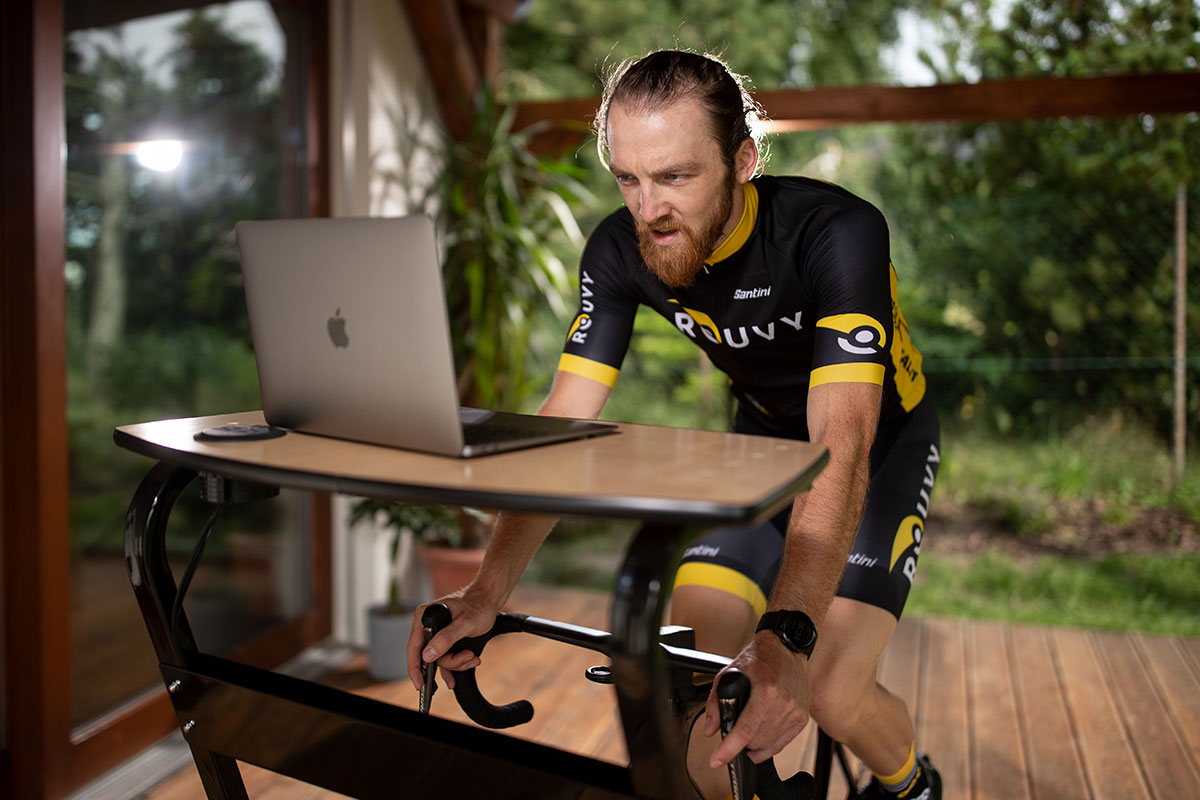
The summer is often a great time for people to get into cycling, with the nice weather, blue skies, big dose of sun and limited cause for punctures or bike cleaning. But for those riders who took up cycling in the summer, and are now faced with lower temperatures, wind, rain, and bike cleaning, there are two options. We can get properly kitted out to keep up cycling through the winter, or take up indoor cycling.
But with the price of everything seeming to go up and up, what are the costs of either option? Which should you choose? And how can you achieve the best results for lowest cost for each option?
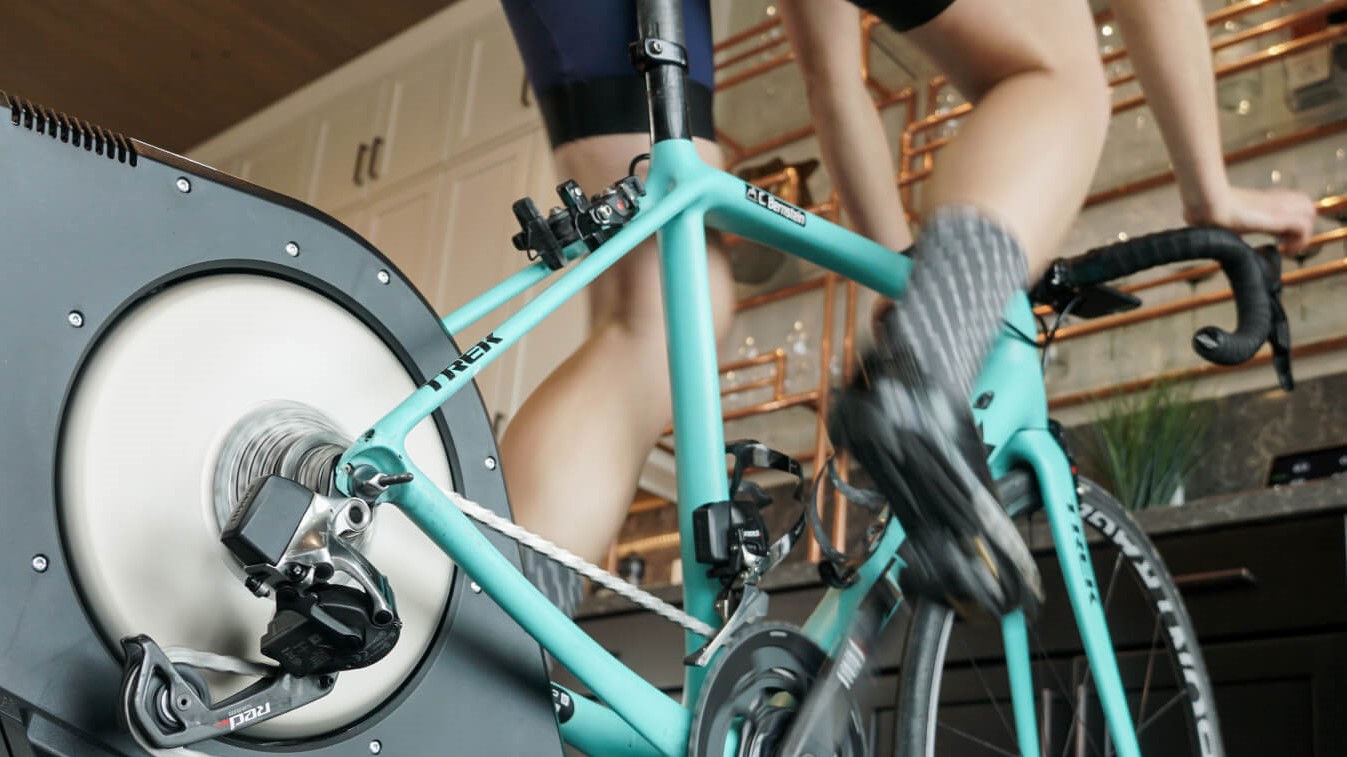
Riding outdoors over winter
When it comes to riding outdoors over the winter, there are several factors to consider to make it the most enjoyable experience possible. With the temperatures being cooler, we need to optimise our clothing and change from the shorts and jersey of the summer.
The minimum needed for riding in temperatures down to about 10˚C are a solid pair of arm and leg warmers, plus a thicker base layer to ensure you stay warm enough. This is to keep your core temperature in the right range and also ensure ideal muscle function as cold legs are not as powerful. It’s normally a good shout to get a packable waterproof jacket as well, since it’s easy to take on rides as well as increasing the range of weather conditions you can comfortably ride in.
For temperatures between 0-10˚C, heavier duty thermal kit will likely be needed. This means thermal jerseys or a winter jacket, plus fleece backed bib tights, and likely an even thicker base layer with insulating gloves for your hands, plus overshoes for feet. You can even get winter specific shoes! With all of these items, prices can vary significantly, and more expensive does not necessarily mean better performance or function.
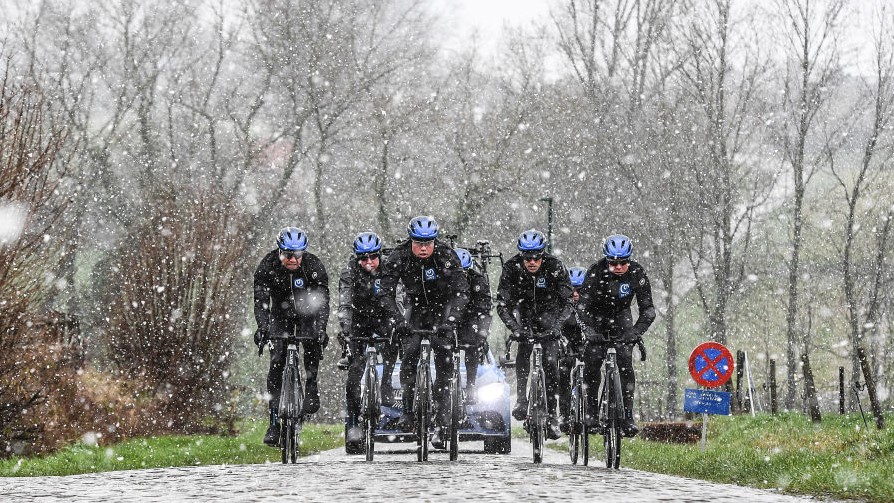
There are other considerations to take when riding outdoors, especially if riding before or after work. A good set of the best bike lights will be essential for safety, both for being able to see and being seen. One of the other most common issues with riding through the winter is the presence of more rain and dirt, which in turn can reduce the lifespan of components such as tires and drivetrain pieces. Cleaning your bike regularly is the best way to ensure that dirt and grime doesn’t build up and components last longer before they wear out. You can generally get away with a bike cleaning spray, degreaser, and a couple of brushes and a cloth.
Beware of spraying degreaser around bearings though, as this will require these to be re-greased and serviced more regularly. Mudguards can help reduce the level of dirt and grime that builds up around the bike and improve lifespan of components, however this won’t sort the mucky drivetrain, but will keep your friends happier with you on the winter club rides.
On the topic of servicing, a lot of bikes nowadays come with integrated headset bearings. These look smart, clean, and have some aerodynamic gains, but they are also a mechanical headache. For this reason, it’s not uncommon for people to have a specific winter training bike. This will often include cheaper specification components, so replacements are cheaper, and easier servicing with non-integrated headsets, given that a headset service can cost upwards of £100 with the time required now. Winter tires with better puncture protection will also be worthwhile with fewer stops to fix punctures, as well as lasting longer than faster and more supple race tyres.
Taking your cycling Indoors
The alternative to riding outdoors is to venture indoors for training. The bare essentials for this are your bike, and a wheel on trainer, which even with power measurements can be purchased relatively cheaply. However, you will likely need to get a turbo training tyre, which will be thicker and have a longer lifespan on this type of indoor trainer.
Clothing wise a pair of shorts and your cycling shoes are the necessaries, however indoor specific clothing can make things more comfortable. You can increase the resistance and improve the ride feel of your trainer, as well as integrate with smart training apps, by spending a little more on a direct drive smart trainer, which have started to drop in price significantly the last couple of years.
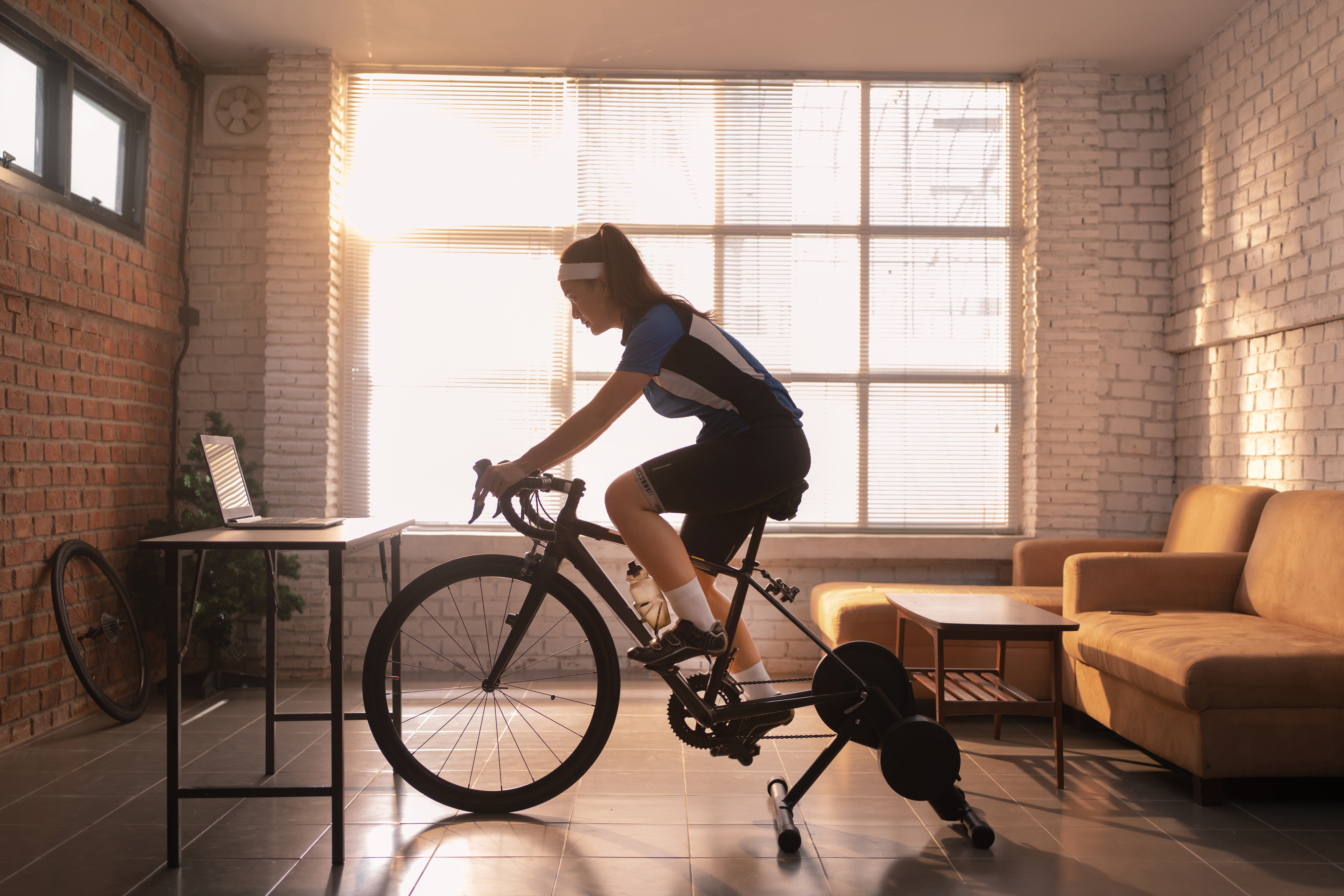
When it comes to smart trainers though, price can get higher and higher depending on accuracy, ride feel due to greater inertia, and features like lateral and fore/aft movement with the Wahoo KICKR Move and Tacx Neo 3M. It is worth considering though that using a standard carbon frame on a turbo can cause excessive stress on parts of the frame such as the bottom bracket, potentially causing damage.
Some bike brands suggest not using their carbon frames on turbo trainers, and won't offer warranties on frames used on direct drive turbos. Sweat also builds up indoors a lot and has the potential to corrode and damage both carbon and metal components. Options to avoid all this are to invest more money into a smart bike, of which there are plenty such as the Wattbike Proton, or to get a specific bike for using indoors. I used to use an old training bike with a hole in one of the chain stays which worked for 6 years, although I wouldn’t necessarily recommend using a broken bike. One of the latest options is the Zwift Ride indoor bike, however this is indoor use only, and limited both in the compatible trainers as well as software.
That brings us on to the other additions to indoor training. Indoor cycling has seen a huge boom over the last 10 years, driven in part to the popularity of apps such as Zwift, SYSTM, Rouvy and MyWhoosh. These are all subscription based with varying prices, and also require a phone, or for a larger screen a tablet, laptop or even a TV setup. From personal experience, and many others, these apps can make training indoors a lot more engaging, fun, and even social! You can also make it a far more enjoyable experience cycling indoors with a good fan. There are smart fan options available, but cheaper alternatives do work pretty much as well as them.
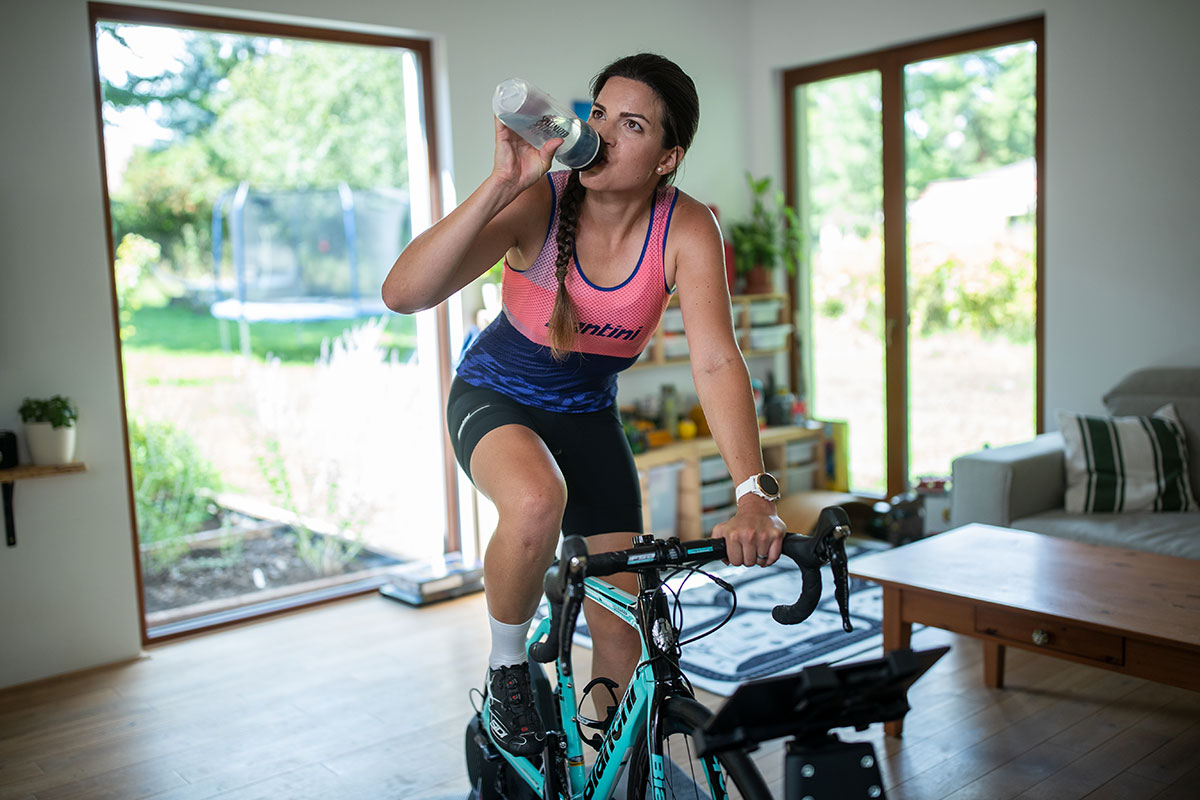
So which is better value?
All of this has the potential to sound incredibly daunting to riders who got into cycling over the summer, and are now working out how best to make the experience enjoyable over winter without excessive cost.
My recommendations for indoor cycling for the minimum are to use your current bike, but change out the tyres for heavier duty winter ones, and make sure you clean your drivetrain each time it gets dirty. Learning some basic bike maintenance and mechanical skills will also save a lot of money in the long run, and are free to do. As for kit, a thermal jersey, deep winter base layer, warm gloves and overshoes, a pair of thermal tights, and a packable waterproof will cover pretty much all weather eventualities. For riding in the dark, a powerful front and rear light will keep things safe.
For indoors, a cheaper direct drive smart trainer and a music stand to place a laptop will make for an effective and easy training base with entertainment centre. Add to that a pair of shorts and a towel and clothing is all sorted, plus a standard fan and sweat catcher to make things more comfortable and keep your bike protected. You can always add to these starting points in the future, but these initial setups should provide a good base for effective winter riding both outdoors and indoors.
We've put together a triplet of menus below to - in very broad terms - compare the costs. One basic setup, with just enough to get you going, a mid range scenario where you want some decent kit to have an enjoyable time, and a money-no-object setup involving new bikes, wall mounted screens, and high end gear.
Budget option
Indoor -
Using your own bike: £0
Wheel on Wahoo KICKR Snap: £299.99
Schwalbe Indoor turbo training tyre: £32
Honeywell TurboForce Power fan: £20.99
Using your summer shorts: £0
Total: £352.98
Outdoor -
Use your current bike: £0 (but expect maintenance costs)
Cleaning product: ~£35-50/year
Van Rysel Winter cycling tights: £34.99
Van Rysel Winter cycling jacket: £34.99
Van Rysel essential base layer: £9.99
Van Rysel thermal gloves: £19.99
Van Rysel waterproof jacket: £19.99
Continental Gatorskin folding tyre: £37.99 per tyre
Total: £235.93
Mid range option
Indoor -
Zwift Ride smart frame: £749
Wahoo KICKR: £939.99
Jetblack Smart fan: £119
Zwift Subscription: £179.99/year or £17.99/month
Turbo towel: £10
Total: £1,997.98
Outdoor -
Specialized Allez with Shimano Claris: £1000
SKS Blummels mudguard set: £42
Pirelli P Zero Race 4S TLR tyres: £80 per tyre
Cleaning product: ~£35-50/year
Rapha Core Winter Jacket: £140
Rapha Core Tights: £150
Rapha Core waterproof: £140
Rapha Winter overshoes: £65
Rapha Pro Team Winter gloves: £75
Total: £1,686
High end option
Indoor -
Tacx Neo Bike Plus: £3499
Apple TV 4K: £149
LG C4 55 inch OLED evo 4K HDR Smart TV: £1399
Zwift Subscription: Zwift Subscription: £179.99/year or £17.99/month
Total: £5,226.99
Outdoor -
Assos Mille GTO Tights: £420
Assos Equipe RS Johdah Winter Jacket S9 Targa: £635
Assos Mille GTO Fuchsröhre shell: £345
Assos GTO Ultraz winter themo rain gloves: £165
Assos GT Ultraz winter booties Evo: £95
Ribble Allroad SLR Hero: £8299
Fizik Tempo Artica R5 GTX Road shoe: £260
Cleaning product: ~£35-50/year
Total: £10,259







